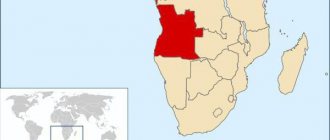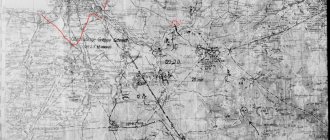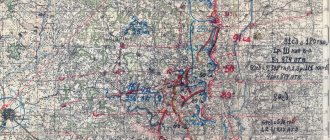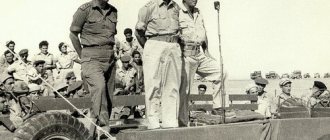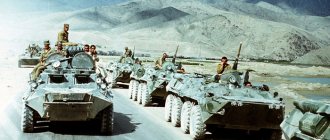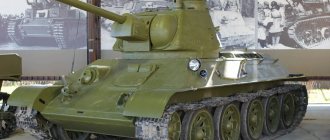World War 2 is the largest multilateral armed conflict in world history. Its main participants were two large military-political coalitions from several countries. And in total, sixty-two states of the world were somehow drawn into the war.
The years of the Second World War are 1939-1945, but in fact it began earlier, when the main instigators of the conflict - Germany, Italy and Japan - began to realize the imperial ambitions of their political elite. It is in the aggressive actions of these countries that the main reasons for World War 2 lie.
Causes, preparation and outbreak of war
V.m.v. arose as a result of a sharp aggravation of economic and ideological. contradictions between the leading world powers. Ch. The reason for its emergence was Germany's course, supported by its allies, towards revenge for defeat in the First World War of 1914–18 and violence. redivision of the world. In the 1930s 2 centers of war were formed - in the Far East and in Europe. The exorbitant reparations and restrictions imposed by the victors on Germany contributed to the development of a strong nationalist movement in Germany. movement in which extremely radical movements gained the upper hand. With A. Hitler coming to power in 1933, Germany turned into a militaristic force dangerous for the whole world. This was evidenced by the scale and pace of growth of its military. economy and weapons. forces (BC). If in 1934 840 aircraft were produced in Germany, then in 1936 - 4733. The volume of military operations. production increased 22 times from 1934 to 1940. In 1935 there were 29 divisions in Germany, and by the fall of 1939 there were already 102 of them. Particular emphasis was placed on the Germans. The leadership made an offensive to prepare for the shock. forces - armored and motorized units. troops, bomber aviation. The Nazi program for world domination included plans for the restoration and expansion of Germany. colonial empire, the defeat of Great Britain, France and posed a threat to the United States, the most important goal of the Nazis was to destroy the USSR. The ruling circles of the West. countries, hoping to avoid war, sought to send Germany. aggression to the East. They contributed to the revival of the military-industrial sector. German bases militarism (US financial assistance to Germany under the Dawes Plan, British-German naval agreement of 1935, etc.) and, in essence, encouraged the Nazi aggressors. The desire to redivide the world was also characteristic of the fascist regime of Italy and militaristic Japan.
Having created a strong military-economic. base and continuing to develop it, Germany, Japan, and also, despite certain economic conditions. difficulties, Italy (in 1929–38 gross industrial output increased by 0.6%) began to implement their aggressive plans. Japan at the beginning 1930s occupied the territory of the North-East. China, creating a springboard for an attack on the USSR, Mongolia, etc. Italy. the fascists invaded Ethiopia in 1935 (see Italo-Ethiopian Wars). In the spring of 1935, Germany, in violation of the military. Articles of the Versailles Peace Treaty of 1919 introduced universal conscription. As a result of the plebiscite, the Saar region was annexed to it. In March 1936, Germany unilaterally terminated the Locarno Treaty (see Locarno Treaties of 1925) and sent its troops into the Rhineland demilitarization. zone, in March 1938 - to Austria (see Anschluss), eliminating the independent European. state (of the great powers, only the USSR expressed protest). On Sept. 1938 Great Britain and France betrayed their ally, Czechoslovakia, agreeing to Germany's seizure of the Sudetenland. (see Munich Agreement 1938). Having a mutual assistance agreement with Czechoslovakia and France, the USSR repeatedly offered military assistance to Czechoslovakia. assistance, but the government of E. Benes refused it. In the fall of 1938, Germany occupied part of Czechoslovakia, and in the spring of 1939 - the entire Czech Republic (Slovakia was declared an “independent state”), seized the Klaipeda region from Lithuania. Italy in April 1939 annexed Albania. Having called to the con. 1938 so-called Danzig crisis and securing itself from the east after imprisonment in Aug. 1939 non-aggression treaty with the USSR (see Soviet-German treaties of 1939), Germany prepared to capture Poland, which received guarantees of military support from Great Britain and France on August 25, 1939.
First period of the war (1.9.1939–21.6.1941)
The Nazis destroy the border sign on the German-Polish border. 1939.
V.m.v. began on September 1, 1939 with the German attack on Poland. By September 1, 1939, the strength of the German Armed Forces reached St. 4 million people, in service there were approx. 3.2 thousand tanks, St. 26 thousand art. guns and mortars, approx. 4 thousand aircraft, 100 warships main. classes. Poland had an armed forces of approx. 1 million people, armed with 220 light tanks and 650 tankettes, 4.3 thousand artillery pieces. guns, 824 aircraft. Great Britain in the metropolis had an armed forces of 1.3 million people, a strong navy (328 warships of the main classes and over 1.2 thousand aircraft, of which 490 are in reserve) and an air force (3.9 thousand aircraft, of which there are 2 thousand of them in reserve). French Armed Forces by the end of August. 1939 numbered approx. 2.7 million people, approx. 3.1 thousand tanks, St. 26 thousand art. guns and mortars, approx. 3.3 thousand aircraft, 174 warships main. classes. 3 Sep. Great Britain and France declared war on Germany, but practically Poland was not provided with assistance. Germ. troops, possessing an overwhelming superiority in forces and equipment, despite the courageous resistance of the Polish. army, defeated it in 32 days and occupied b. part of Poland (see German-Polish War of 1939). Having lost the ability to govern the country, September 17. Polish the government fled to Romania. 17 Sep. owls the government sent its troops into Western territory. Belarus and Western Ukraine (see Campaign of the Red Army 1939), which were part of Russia until 1917, to take Belarus under protection. and Ukrainian population due to the collapse of Poland. state and prevent further advance of the Germans. armies to the east (these lands were classified as the Soviet “sphere of interests” according to the Soviet-German secret protocols of 1939). Important political consequences in the initial period of V.m.v. had the reunification of Bessarabia with the USSR and the entry into it of the North. Bukovina, conclusion of agreements in September. – Oct. 1939 on mutual assistance with the Baltic states and what followed in Aug. 1940 entry of the Baltic states into the Soviet Union. Union. As a result of the Soviet-Finnish war of 1939–40, although at the cost of great casualties, ch. strategic the goal pursued by the owl. leadership - to secure the north-west. border. However, there was no complete guarantee that the territory of Finland would not be used for aggression against the USSR, since the political policy set. the goal - the creation of a pro-Soviet regime in Finland - was not achieved, and the hostile attitude towards the USSR intensified. This war led to a sharp deterioration in relations between the USA, Great Britain and France with the USSR (12/14/1939 the USSR was expelled from the League of Nations for the attack on Finland). Great Britain and France even planned war. the invasion of the USSR from Finland, as well as the bombing of the oil fields of Baku. Progress of Soviet-fin. war strengthened doubts about the combat effectiveness of the Red Army, which arose in the West. ruling circles in connection with the repressions of 1937–38 against its command staff, and gave confidence to A. Hitler in his plans for the quick defeat of the Soviets. Union.
In the West Europe was going through a “strange war” until May 1940. British-French The troops were inactive, and the Germans. armed forces using strategic pause after the defeat of Poland, they were actively preparing for an attack on Western Europe. states. 9.4.1940 German troops occupied Denmark without declaring war and launched an invasion of Norway on the same day (see Norwegian operation 1940). The British who landed in Norway. and French The troops captured Narvik, but were unable to resist the aggressor and were evacuated from the country in June. On May 10, Wehrmacht units invaded Belgium, the Netherlands, and Luxembourg and struck France through their territories (see French campaign of 1940) bypassing the French. "Maginot Lines" Having broken through the defenses in the Sedan area, German tank formations. troops reached the English Channel on May 20. On May 14, Goal capitulated. army, May 28 – Belgian. Brit. expedition hull and parts of the French troops blocked in the Dunkirk area (see Dunkirk operation 1940) managed to evacuate to Great Britain, abandoning almost the entire military. technique. Germ. troops occupied Paris on June 14 without a fight, and France capitulated on June 22. Under the terms of the Compiegne Truce b. Part of France was occupied by Germany. troops, south part remained under the rule of the pro-fascist government of Marshal A. Pétain (Vichy government). At the end of June 1940, the French was formed in London. patriotic organization headed by Gen. C. de Gaulle - “Free France” (from July 1942 “Fighting France”).
On June 10, 1940, Italy entered the war on the side of Germany (in 1939 its armed forces numbered over 1.7 million people, about 400 tanks, about 13 thousand artillery guns and mortars, about 3 thousand aircraft, 154 warships of the main classes and 105 submarines). Italian troops captured Briton in August. Somalia, part of Kenya and Sudan, invaded Egypt from Libya in September, where they were stopped and defeated by the British in December. troops. Attempt Italian. troops in October to develop an offensive from the occupiers. In 1939, they repelled the Greek from Albania to Greece. army. In the Far East, Japan (by 1939 its armed forces included over 1.5 million people, over 2 thousand tanks, about 4.2 thousand artillery pieces, about 1 thousand aircraft, 172 warships main classes, including 6 aircraft carriers with 396 aircraft, and 56 submarines) occupied the south. areas of China and occupied the northern. part of the French Indochina. Germany, Italy and Japan 27 Sep. concluded the Berlin (Tripartite) Pact (see Three Powers Pact of 1940).
Military leaders of Germany in 1941 (from left to right): G. Goering, W. Keitel, G. Himmler and A. Hitler.
In Aug. Air service began in 1940. German bombing of Great Britain. aviation (see Battle of Britain 1940–41), the intensity of which sharply decreased in May 1941 due to the transfer of Ch. German forces Air Force to the east to attack the USSR. In the spring of 1941, the United States, which had not yet participated in the war, landed troops in Greenland and then in Iceland, creating a military force there. bases. Actions intensified. submarines (see Battle of the Atlantic 1939–45). In Jan. – May 1941 British troops, with the support of the rebellious population, expelled the Italians from the East. Africa. In February in the North. Germany arrived in Africa. troops that formed the so-called African corps headed by Gen.-L. E. Rommel. Going on the offensive on March 31, the Italian-German. troops in the 2nd half. April reached Libya-Egypt. borders (see North African Campaign 1940–43). Preparing an attack on the Sov. The Union and the countries of the fascist (Nazi) bloc carried out aggression in the Balkans in the spring of 1941 (see Balkan campaign of 1941). Germ. On March 1–2, troops entered Bulgaria, which joined the Tripartite Pact, and on April 6. German troops (later Italian, Hungarian and Bulgarian troops) invaded Yugoslavia (capitulated on April 18) and Greece (occupied on April 30). In May Fr. was captured. Crete (see Cretan airborne operation 1941).
Military Germany's successes in the 1st period of the war mean. degrees were determined by the fact that its opponents were unable to unite their efforts and create a unified military system. leadership, develop effective plans for joint warfare. Economy and resources of the occupiers. European countries were used to prepare for war against the USSR.
Second period of the war (22.6.1941 – November 1942)
22.6.1941 Germany, violating the non-aggression pact, suddenly attacked the USSR. Together with Germany, Hungary, Romania, Slovakia, Finland, and Italy opposed the USSR. The Great Patriotic War of 1941–45 began. Sov. Union with ser. 1930s took measures to increase the country's defense capability and repel possible aggression. Industrial development proceeded at an accelerated pace, and the scale of military production increased. products, new types of tanks, aircraft, artillery were introduced into production and adopted. systems, etc. In 1939, a new Law on universal conscription was adopted, aimed at creating a mass cadre army (by mid-1941, the number of Soviet Armed Forces increased compared to 1939 by more than 2.8 times and amounted to about 5, 7 million people). The experience of the military was actively studied. actions in the West, as well as Soviet-Finnish. war. However, unleashed in the end. 1930s Stalin's leadership of mass repressions, which hit especially hard on the Armed Forces, reduced the effectiveness of preparations for war and affected the development of military-political. situation at the beginning of Hitler's aggression.
The entry of the USSR into the war determined the content of its new stage and had a colossal influence on the policies of the leading world powers. The governments of Great Britain and the USA declared support for the USSR on June 22–24, 1941; in July - October agreements were concluded on joint actions and military-economic. cooperation between the USSR, Great Britain and the USA. In Aug. – Sep. The USSR and Great Britain sent their troops to Iran to prevent the possibility of creating fascist bases in the Middle East. These joint military-political. The actions marked the beginning of the creation of an anti-Hitler coalition. 24 Sep. at the London Intl. conference in 1941, the USSR joined the Atlantic Charter in 1941.
Soviet-German the front became the main front V. m.v., where the armed. the struggle became extremely fierce. 70% of the German personnel acted against the USSR. Ground forces and SS units, 86% tank, 100% motorized. formations, up to 75% artillery. Despite major successes at the beginning of the war, Germany failed to achieve strategic goals. goals envisaged by Plan Barbarossa. The Red Army, suffering heavy losses, in fierce battles in the summer of 1941 thwarted the “blitzkrieg” plan. Sov. The troops in heavy battles exhausted and bled the advancing enemy groups. Germ. The troops failed to capture Leningrad, were pinned down for a long time by the defense of Odessa in 1941 and the defense of Sevastopol in 1941–42, and were stopped near Moscow. As a result of the defeat of the German troops in the Battle of Moscow 1941–1942, the myth of the invincibility of the Wehrmacht was dispelled. This victory forced Germany into a protracted war and inspired the peoples of the occupiers. countries will not be liberated. the struggle against fascist oppression gave impetus to the Resistance Movement.
Having attacked the Americans on December 7, 1941. military Pearl Harbor base, Japan launched a war against the United States. 8 Dec. The USA, Great Britain and a number of other states declared war on Japan, December 11. Germany and Italy declared war on the United States. The entry of the United States and Japan into the war affected the balance of forces and increased the scale of weapons. struggle. The Moscow conferences of 1941–43 between representatives of the USSR, USA and Great Britain on the issue of military affairs played a major role in the development of allied relations. supplies of Sov. Union (see Lend-Lease). In Washington on January 1, 1942, the Declaration of 26 States of 1942 was signed, which was later joined by other states.
All in. Africa in November 1941 British troops, taking advantage of the fact that the main Wehrmacht forces were pinned down near Moscow, launched an offensive, occupied Cyrenaica and lifted the blockade of the besieged Italo-Germans. troops of Tobruk, but in January - June Italo-German. The troops, having launched a counter-offensive, advanced 1.2 thousand km, captured Tobruk and part of the territory of Egypt. After that, in African There was a lull on the front until the fall of 1942. In the Atlantic approx. German The submarines continued to cause great damage to the Allied fleets (by the fall of 1942, the tonnage of sunken ships, mainly in the Atlantic Ocean, amounted to over 14 million tons). Japan at the beginning 1942 occupied Malaya, the most important islands of Indonesia, the Philippines, Burma, and inflicted a major defeat on the British. fleet in the Gulf of Thailand, British-American-Gol. fleet in the Javanese operation and seized supremacy at sea. Amer. The Navy and Air Force, significantly strengthened by the summer of 1942, went to sea. battles in Coral Cape (May 7–8) and near the island. Midway (June) defeated the Japanese. to the fleet. All in. China Japanese The invaders launched punitive operations in the areas liberated by the partisans.
On May 26, 1942, an agreement was signed between the USSR and Great Britain on an alliance in the war against Germany and its satellites; On June 11, the USSR and the USA entered into an agreement on the principles of mutual assistance in waging war. These acts completed the creation of the anti-Hitler coalition. On June 12, the USA and Great Britain promised to open a second front in the West. Europe in 1942, but did not comply with it. Taking advantage of the absence of a second front and the defeats of the Red Army in the Crimea, and especially in the Kharkov operation of 1942, German. the command undertook a new strategic strategy in the summer of 1942. attack on the Soviet-German front. In July - November owls. The troops pinned down enemy strike groups and prepared the conditions for launching a counteroffensive. German failure. attack on the Soviet-German front in 1942 and the failures of the Japanese. Sun on the Pacific approx. forced Japan to refrain from the planned attack on the USSR and go into battle. 1942 to defense in the Pacific region. At the same time, the USSR, observing neutrality, refused to allow the United States to use military air. bases on Sov. The Far East, from where it would be possible to strike at Japan.
The entry into the war of the two largest countries in the world - the USSR and then the USA - led to a gigantic expansion of the scale of hostilities in the 2nd period of military warfare and an increase in the number of armed forces participating in the fight. In contrast to the fascist bloc, an anti-fascist coalition of states was formed, which had huge economic resources. and military potentials. Already towards the end. 1941 to Soviet-German At the front, the fascist bloc was faced with the need to wage a long, protracted war. The weapons also took on a similar character. struggle in the Pacific region, in the Southeast. Asia and other theaters of war. By the fall of 1942, the adventurism of the aggressive plans of the leadership of Germany and its allies, designed to achieve world domination, became completely obvious. Attempts to crush the USSR were unsuccessful. In all theaters of operations, the offensive of the aggressor armed forces was stopped. However, the fascist coalition continued to remain powerful military-political. an organization capable of action.
Operation "Barbarossa" (1941-42)
By early 1941, Hungary, Romania and Bulgaria had joined the Axis, and in April of that year German forces invaded Yugoslavia and Greece. Hitler's conquest of the Balkans was a harbinger of his real goal: the invasion of the Soviet Union, whose vast territory would give the German master race the "living space" it needed. Another part of Hitler's strategy was the extermination of Jews from all of German-occupied Europe. Plans for the “Final Solution” were introduced around the time of the Soviet offensive, and over the next three years more than 4 million Jews would die in death camps set up in occupied Poland. On June 22, 1941, Hitler ordered the invasion of the Soviet Union, codenamed Operation Barbarossa. Although Soviet tanks and aircraft greatly outnumbered the Germans, their air technology was largely outdated, and the impact of the surprise invasion helped the Germans get within 200 miles of Moscow by mid-July. Disputes between Hitler and his commanders delayed another German offensive until October, when it was stopped by a Soviet counteroffensive and the onset of severe winter weather.
Third period of the war (Nov. 1942 – Dec. 1943)
Battle of Kursk. Soviet tanks, in cooperation with infantry, counterattack the enemy. July 1943.
Basic events V.m.v. in 1942–1943 they developed into Soviet-German ones. front. By Nov. In 1942, 192 divisions and 3 brigades of the Wehrmacht (71% of all Ground Forces) and 66 divisions and 13 brigades of the German allies operated here. 19 Nov The Soviet counter-offensive began. troops near Stalingrad (see Battle of Stalingrad 1942–43), which ended with the encirclement and defeat of the 330,000-strong German group. troops. German attempt. Army Group "Don" (commander - Field General E. von Manstein) to release the encircled group of Field General. F. von Paulus was disrupted. Having shackled ch. Wehrmacht forces in Moscow. direction (40% of German divisions), Soviet. the command did not allow the reserves Manstein needed to be transferred to the south. Victory of the owls. troops at Stalingrad was the beginning of a radical change in Vel. Otech. war and had a great influence on the further course of the entire military war. It undermined the prestige of Germany in the eyes of its allies and raised doubts among the Germans themselves about the possibility of victory in the war. The Red Army, having captured the strategic initiative, launched a general offensive against the Soviet-German. front. The mass expulsion of the enemy from Soviet territory began. Union. The Battle of Kursk in 1943 and the advance to the Dnieper completed a radical turning point during the Great War. Otech. war. The Battle of the Dnieper in 1943 upset the enemy’s plans for a transition to a protracted positional defense. war.
An American C-47 transport aircraft is on a mission in Egypt. 1943.
In the fall of 1942, when the fierce battles on the Soviet-German. the front was shackled Wehrmacht forces, British-American. troops intensified the military. actions in the North Africa. They won the El Alamein operation of 1942 in October–November and carried out the North African landing operation of 1942. As a result of the Tunisian operation of 1943, the Italian-German. troops in the North Africa capitulated. British-American troops, taking advantage of the favorable situation (the main enemy forces took part in the Battle of Kursk), landed on the island on July 10, 1943. Sicily and by mid-August they captured it (see Sicilian landing operation 1943). On July 25, the fascist regime in Italy fell, the new government of P. Badoglio September 3. concluded a truce with the allies. Italy's withdrawal from the war marked the beginning of the collapse of the fascist bloc. Oct 13 Italy declared war on Germany, and Germany responded. troops occupied the North. Italy. In September, Allied troops landed in southern Italy, but were unable to break German resistance. troops for defense. line created north of Naples, and active operations were suspended in December. During this period, secret negotiations between representatives of the United States and Great Britain and Germany intensified. emissaries (see Anglo-American-German contacts 1943–45). On the Quiet approx. and in Asia, Japan, moving to strategic. defense, sought to retain the territories captured in 1941–42. The Allies, starting in Aug. 1942 offensive in the Pacific region, captured about. Guadalcanal (Solomon Islands; February 1943), landed on the island. New Guinea, drove the Japanese out of the Aleutian Islands, and inflicted a number of defeats on the Japanese. to the fleet.
3rd period V.m.v. went down in history as a period of radical change. The determining importance for change is strategic. the situations were historical. victory of the owls Armed Forces in the Battles of Stalingrad and Kursk and the Battle of the Dnieper, as well as the Allied victories in the North. Africa and the landing of their troops in Sicily and in the south of the Apennine Peninsula. However, Ch. the severity of the struggle with Germany and its European. the allies were still carrying the Sov. Union. At the Tehran Conference of 1943, at the request of the Soviets. The delegation decided to open a second front no later than May 1944. The armies of the Nazi bloc in the 3rd period of the World War II. could not win a single major victory and were forced to take a course towards prolonging the war. actions and transition to strategic. defense Having passed the turning point, V. m.v. in Europe has entered its final stage.
Code names of Wehrmacht combat operations from 1938 to 1945.
The list below shows all the main military operations of the Wehrmacht carried out during the Second World War (1939-1945) and at the same time having their own “name”, that is, a code designation. Transactions are listed alphabetically, not by date. Each line includes: the original name in Latin, transcription or pronunciation, if required, Russian translation of the name in brackets, the purpose of the operation and the year of implementation. Please note: not all operations were carried out successfully, and some remained only plans.
Hitler's plan "Barbarossa" as of December 18, 1940
- ACHSE (Operation Axis). Occupation of Italy, 1943
- ALARICH (Operation Alarich). An earlier version of the "Achse" plan.
- ALPENVEILCHEN (Operation Alpine Violet). Plan for the invasion of Albania, 1940.
- AIDA (Operation Aida). Plan for the Panzer Corps "Africa" to reach the Nile line and occupy Egypt, 1942.
- ANTON (Operation "Anton"). Another code name used for Operation Atilla, 1942.
- ATTILA (Operation Attila). Plan for the complete occupation of France, 1940-1942.
- ATTIKA (Operation Attica). The offensive operation of German troops in August-September 1942 in the North Caucasus.
- AUGSBURG (Operation Augsburg). Delay of the offensive in the West, November 1939.
- BARBAROSSA (Operation Barbarossa). Attack on Russia, 1941.
- BLAUFUCHS (Operation Polar Fox, (“Blaufuchs”)). German-Finnish offensive on the Murmansk sector of the Northern Front, 1941.
- BLAU (Operation Blue). Plan for the summer-autumn campaign of German troops on the southern wing of the Soviet-German front, 1942.
- BLUCHER (Operation Blucher). Offensive from Crimea to the Caucasus by Army Group South, 1942.
- BRAUNSCHWEIG (Operation Braunschweig). Army Group South offensive in the Caucasus, 1942.
- DANZIG (Operation Danzig). Continuation of the offensive in the West, November 1939.
- DONNERSCHLAG (Operation Thunderbolt). Plan for the breakthrough of the 6th Army from encirclement at Stalingrad, 1942.
- EDELWEISS (Operation Edelweiss). Capture of Baku, 1942.
- ELBE (Operation Elbe). An earlier version of the “Augsburg” plan.
- FELIX (Operation Felix). Capture of Gibraltar, 1940-41.
- FEUERZAUBER (Operation "Magic Fire"). An earlier version of the “Nordlicht” plan.
- FISCHZEIHER (Operation Heron). Capture of Stalingrad, 1942.
- FRITZ (Operation Fritz). Plan to attack Russia, later renamed “Barbarossa”.
- GELB (Operation Yellow). The capture of Belgium, Holland, Luxembourg, as well as the first part of the capture of France in 1940.
- GERTRUD (Operation Gertrude). Plan for the invasion of Turkey, in the event of its action against Germany.
- GRUN (Operation Green). Occupation of Czechoslovakia, 1938.
- HARTMUT (Operation Hartmut). Invasion of Denmark and Norway, 1940.
- HIMMLER (Operation Himmler). Border incident in Gleiwitz, Poland, 1939.
- ILONA (Operation Ilona). Attack on Spain.
- ISABELLA (Operation Isabella). Invasion of Portugal, early version of Plan Ilona, 1941.
- JOLKA (Operation "Yolka"). Occupation of Sweden, 1940
- KRIEMHILD (Operation Kriemhilda). Retreat from Kuban.
- KOTTBUS (Operation Cottbus). Operation against Belarusian partisans in 1943
- KORMORAN (Operation Cormorant). Operation against Belarusian partisans in May-June 1944
- KUGELBLITZ (Operation Thunderball). German-Italian operation against Yugoslav partisans, 1943
- LACHSFANG (Operation Salmon Fishing). Capture of the Murmansk Railway, 1942.
- MARITA (Operation Marita). Attack on Greece, 1941.
- MAMEL (Operation Mamel). Operation against Polish partisans in 1943
- MARGARET I (Operation Margaret I). The operation of German troops to occupy Hungary in March 1944
- MARGARET II (Operation Margaret II). The operation of German troops to occupy Romania in 1944
- MERKUR (Operation Mercury). Capture of the island of Crete, 1941.
- NORDLICHT (Operation Northern Light). Capture of Leningrad, 1942. (Plan not implemented)
- OLDENBURG (Operation Oldenburg). An early version of Operation Barbarossa.
- OTTO (Operation Otto). Invasion of Austria.
- PANTER (Operation Panther). Wehrmacht operation (with Croatian participation) against Yugoslav partisans, 1943
- POLARFUCHS (Operation Arctic Fox). German offensive operation in the Soviet Arctic, 941
- PROJEKT 25 (Project 25"). Invasion of Greece.
- ROT (Operation Red). A series of operations in northern France, which contributed to the defeat and encirclement of the French army, 1940.
- REINDEER (Operation Reindeer). Fighting in Finland.
- RHEIN (Operation Rhine). An earlier version of the Danzig plan.
- RÖSSELSPRUNG (Operation "Knight's Move", in 1942 there was an operation of the same name by the German Navy). Operation against the leadership of the Yugoslav partisans, 1944
- RUBEZAHL (Operation Rubezal). Operation against Yugoslav partisans, 1943
- SILBERFUCHS (Operation Silver Fox). Plan of joint actions of German-Finnish troops against Murmansk, 1941.
- SCHAMIL (Operation Shamil). Parachute landing on Maykop, 1942.
- SCHULUNG (Operation Exercise). Exercises before the capture of the Rhine demilitarized zone.
- SEELEWE (Operation Sea Lion). Invasion of England, 1940. (Plan not implemented)
- SONNENBLUME (Operation Sunflower). Expedition to Tripoli, 1941.
- SONNENWENDE (Operation Solstice). Plan for a counterattack in Pomerania, against the flank of the Soviet group. February 1945 (Plan not implemented)
- SUMPFBLUTE (Operation Sumpfbluff). Operations against partisans in Ukraine, 1942
- TAIFUN (Operation Typhoon). Capture of Moscow, 1941.
- TANNENBAUM (Operation Spruce (Tannenbaum)). Capture of Switzerland, 1940 (Plan not implemented)
- TRAPPENJAGD (Operation Bustard Hunt). Operation of the 11th Wehrmacht Army against the Soviet Crimean Front, 1942.
- WOTAN (Operation Wotan). Plan for a tank breakthrough to Moscow, 1941.
- WEISS (Operation White). Attack on Poland, 1939.
- WESEREBUNG (Operation "Exercise on Wesel"). Invasion of Denmark and Norway, 1940
- WESEREBUNG NORD (Operation "Exercise Wesel - North"). Capture of Norway, 1940.
- WESEREBUNG SUD (Exercise at Wesel - South). Capture of Denmark, 1940.
- WIESENGRUND (Operation Green Meadow). Capture of the Rybachy Peninsula in the Arctic, 1942
- WINTERGEWITTER (Operation Winter Storm). An operation of German troops in December 1942 with the aim of releasing the blockade of a group surrounded near Stalingrad.
- ZITADELLE (Operation Citadel). Kursk Bulge, Russia, 1943.
Source: compilation based on publicly available information on the Internet
The fourth period of the war (Jan. 1944 - May 1945)
The Allied convoy returns from the northern ports of the USSR. Photo 1944.
Soldiers of the 8th Estonian Rifle Corps enter Tallinn. September 1944.
The fourth period of the war (Jan. 1944 - May 1945) began with a new offensive of the Red Army. Sov. troops in 1944 throughout the Soviet-Germany. front fell on the enemy will crush. blows and expelled the invaders from the borders of the Sov. Union. During the subsequent offensive, the USSR Armed Forces played a decisive role in the liberation of Poland, Czechoslovakia, Yugoslavia, Bulgaria, Romania, Hungary, Austria, and northern. areas of Norway, in the withdrawal of Finland from the war, created the conditions for the liberation of Albania and Greece. Together with the Red Army, troops from Poland, Czechoslovakia, and Yugoslavia took part in the fight against Nazi Germany, and after the armistice was concluded with Romania, Bulgaria, and Hungary, military units of these countries also took part. The Allied forces, having carried out Operation Overlord, opened a second front and launched an offensive in Germany. Having landed on August 15, 1944 in the south of France, the British-American. troops with the active support of the French. By mid-September, the Resistance movements had linked up with the troops advancing from Normandy, but the Germans. the troops managed to leave France. After the opening of the second front, Ch. front V.m.v. continued to remain a Soviet-German. front, where 1.8–2.8 times more troops of the countries of the fascist bloc operated than on other fronts.
In Feb. In 1945, the Crimean (Yalta) conference of 1945 leaders of the USSR, USA and Great Britain took place, during which plans for the end were agreed upon. defeat of the German Armed Forces, the main plans are planned. principles of general policy regarding the post-war structure of the world, decisions were made on the creation of occupation zones and an all-German control body in Germany, on the collection of reparations from Germany, on the creation of the UN, etc. The USSR agreed to enter the war against Japan 3 months after the surrender of Germany and the end wars in Europe.
During the Ardennes operation of 1944–1945, Germany. troops defeated the allied forces. To ease the position of the Allies in the Ardennes, at their request, the Red Army began its winter offensive ahead of schedule (see Vistula-Oder Operation of 1945 and East Prussian Operation of 1945). Having restored the situation by the end of January 1945, the British-Amer. troops in the horse March crossed the Rhine and in April carried out the Ruhr operation, which ended in the encirclement and capture of a large enemy group. During the Northern Ital. operations 1945 allied forces with the help of italians. The partisans completely captured Italy in April - early May. In the Pacific theater of operations, the Allies carried out operations to defeat the Japanese. fleet, liberated a number of islands, approached Japan directly (April 1, American troops landed on the Japanese island of Okinawa) and cut off its communications with the countries of the Southeast. Asia.
In April–May, Red Army formations defeated the last German groups in the Berlin Operation of 1945 and the Prague Operation of 1945. troops and met with Allied troops. The war in Europe is over. The unconditional surrender of Germany was accepted late in the evening of May 8 (at 0:43 a.m. on May 9, Moscow time) by representatives of the USSR, USA, Great Britain and France.
Pilots of the French aviation regiment "Normandy" talk with a Soviet pilot. 1944.
In the 4th period of V. m.v. the struggle reached its highest scope and tension. The largest number of states, armed forces personnel, and military personnel took part in it. equipment and weapons. Military-economic Germany's potential declined sharply, while in the countries of the anti-Hitler coalition it reached its highest level during the war years. Military the actions took place in conditions when Germany found itself facing the armies of the Allied powers advancing from the east and west. From the end In 1944, Japan remained Germany's only ally, which indicated the collapse of the fascist bloc and the bankruptcy of German foreign policy. The USSR victoriously completed an unprecedented period of brutality. Otech. war.
Operation Vice
At 4:45 a.m. on September 1, German troops tore down the border barriers and invaded Polish territory. The Poles were taken by surprise - they did not have time to mobilize. Most Europeans at the beginning of September 1939 had absolutely no idea of the scale of the catastrophe that had occurred, even the Poles themselves. An American journalist in Warsaw wrote about how brave the city’s residents were: “To listen to what people are chatting about here, you will imagine that the great industrial power is not Germany, but Poland.” Four weeks later, the Poles were miserably defeated, and their country was divided between the Third Reich and the Soviet Union. The Polish campaign showed what this war would be like. [Collection: World War II Operations]
General Adrian Carton de Wiart, head of the British mission in Poland, wrote: “I have seen how the very nature of war has changed, honor and glory have departed from it, it is no longer the soldier who risks his life in battle, but women and children are dying.”
Germans on the border, September 1939. (topwar.ru)
Fifth period of the war (10.5–2.9.1945)
At the Berlin (Potsdam) Conference of 1945, the USSR confirmed its readiness to enter the war with Japan, and at the San Francisco Conference of 1945 jointly. with representatives of 50 states, developed the UN Charter. In order to demoralize the enemy and demonstrate their military. power before the allies (primarily before the USSR), the United States dropped atomic bombs on Hiroshima and Nagasaki (August 6 and 9, respectively). Performing ally. debt, the USSR declared war on Japan and on August 9. began the military actions. During the Soviet-Japanese War 1945 Owls. troops, defeating the Japanese. The Kwantung Army (see Manchurian Operation of 1945), eliminated the source of aggression in the Far East, liberated the North-East. China, North Korea, South Sakhalin and the Kuril Islands, thereby accelerating the end of the war. 2 Sep. Japan capitulated, V.m.v. ended.
1943-1944
Active actions on the part of the Red Army forced Germany to begin withdrawing its troops from the Rzhev-Vyazma bridgehead. An important event was the Battle of Kursk, where troops of the Western and Bryansk fronts launched a counterattack. However, only the liberation of Smolensk ended in success.
The Western Front reported failure in eleven operations. On April 24, 1944, the front was renamed the Third Belorussian. Preparations for the Belarusian strategic offensive operation began immediately.
It is worth noting that the war greatly influenced the economic situation of European countries. Now the United States is leading the way in this sector on the world stage. The creation of the UN gave hope that in the future all conflicts could be resolved through agreements, excluding military clashes.
Main results of World War II
The Japanese representative, Foreign Minister M. Shigemitsu, signs the Instrument of Surrender. September 1945.
Allied troops in the Ardennes. December 1944.
K. Attlee, G. Truman, I.V. Stalin (sitting from left to right). W. Leahy, E. Bevin, J. Byrnes, V. M. Molotov during the days of the Potsdam Conference. 1945.
V.m.v. was the largest military collision in human history. It lasted 6 years, the population of the participating states was 1.7 billion people, and 110 million people were in the ranks of the Armed Forces. Military actions took place in Europe, Asia, Africa, the Atlantic, Pacific, Indian and Northern. Arctic oceans. It was the most destructive and bloody of wars. St. died in it. 55 million people The damage from the destruction and destruction of material assets on the territory of the USSR amounted to approx. 41% of losses of all countries participating in the war. Sov. The Union carried the main the severity of the war, suffered the greatest human casualties (about 27 million people died). Great victims were suffered by Poland (about 6 million people), China (over 5 million people), Yugoslavia (about 1.7 million people) and other states. Soviet-German the front was ch. front V.m.v. It was here that the military was crushed. the power of the fascist bloc. In different periods in the Soviet-German. From 190 to 270 divisions of Germany and its allies operated on the front. British-American troops in the North Africa in 1941–43 was opposed by 9 to 20 divisions, in Italy in 1943–1945 - from 7 to 26 divisions, in the West. Europe after the opening of the second front - from 56 to 75 divisions. The Soviet Armed Forces defeated and captured 607 enemy divisions, the Allies - 176 divisions. Germany and its allies lost to the Soviet-German. front approx. 9 million people (total losses - approx. 14 million people) and approx. 75% of military equipment and weapons. The length of the Soviet-German front during the war years ranged from 2 thousand km to 6.2 thousand km, North African - up to 350 km, Italian - up to 300 km, Western European 800-1000 km. Active actions on the Soviet-German. 1320 days out of 1418 (93%) were fought on the front, 1094 out of 2069 days were fought on the Allied fronts (53%). The irretrievable losses of the allies (killed, died from wounds, missing in action) amounted to approx. 1.5 million soldiers and officers, including the USA - 405 thousand, Great Britain - 375 thousand, France - 600 thousand, Canada - 37 thousand, Australia - 35 thousand, New Zealand - 12 thousand. , South Africa Union - 7 thousand people. The most important result of the war was the defeat of the most aggressive reactions. forces, which radically changed the political balance. forces in the world, determined its entire post-war development. From physical destruction were saved by many. peoples of “non-Aryan” origin who were destined to perish in Nazi concentration camps or become slaves. The defeat of Nazi Germany and imperialism. Japan contributed to the rise of national liberation. movement, the collapse of the colonial system of imperialism. For the first time, a legal assessment was given to the ideologists and perpetrators of misanthropy. plans for conquest of world domination (see Nuremberg trials 1945–49 and Tokyo trials 1946–48). V.m.v. had a comprehensive influence on the further development of the military. lawsuits, aircraft construction. It was distinguished by the massive use of tanks, a high degree of motorization, and the widespread introduction of new combat and technical equipment. funds. During the V.m.v. radars and other radio electronics, rocket artillery, jet aircraft, projectile aircraft and ballistic missiles were used for the first time, and at the final stage - nuclear weapons. V.m.v. clearly showed the dependence of war on the economy and scientific and technological progress, the close relationship of economic, scientific, military and other potentials on the path to victory.



